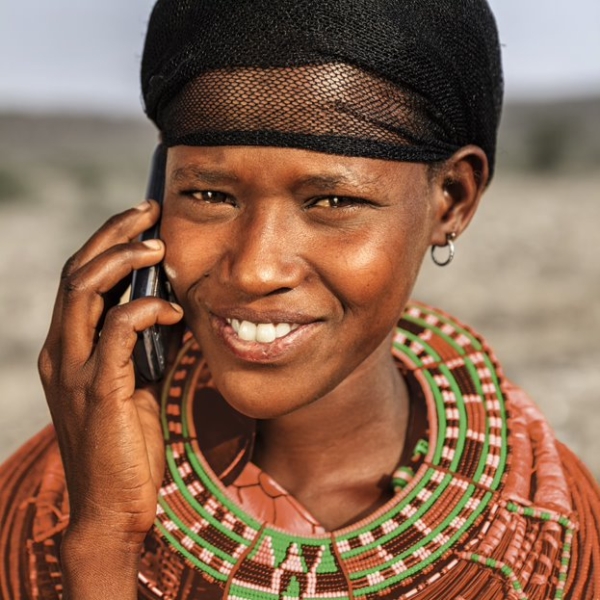Hot Telecom Trends in 2020 – Africa
Lux Maharaj
As the new decade dawns, the telecommunications industry (specifically mobile), has finally woken up to the fact that its economics need to change, especially with the advent and expected widespread uptake of 5G. Much of this realization has been driven by a need to move away from the consolidation of the RAN industry that has seen Huawei, Ericsson and Nokia dominate the space and in the process, creating a closed, almost anti-competitive market. The development of OpenRAN, which in 2019 really gathered momentum, has changed the playing field.

An open market and mindset have also driven efficiencies. The traditional proprietary and closed nature of RAN technology has made it costly and difficult to upgrade technology once it is deployed. The option to choose and use multiple vendors changes this now that a wide range of product, price and services are on offer. The competitive nature of an open market will also mean that innovation will be a constant – not a bad thing if you consider just how fast the sector is evolving.
Here in Africa, OpenRAN is set to play a vital role in the connectivity race. Much of the continent is still unconnected, and the regions that are connected are largely dependent on legacy infrastructure, with 2G and 3G abounding, and 4G still in its infancy. That has not stopped the sprint to bring 5G to Africa, though, with Uganda recently being the first country in Western and Central Africa to deploy 5G Internet.
However, although there are capabilities to deploy 5G, Africa-based operators will require the ability to run 5G alongside their existing 2G, 3G and 4G networks. At present, that can only be solved with either erecting new infrastructure or deploying OpenRAN, which can run alongside existing infrastructure. It’s a no brainer really…
On that note, here’s what I see as the key components that will happen in the African telecoms market in 2020 to set up for the next decade:
5G
- Widespread rollout of 5G, including the African continent.
- The first commercial deployment of stand-alone core. With the 3GPP Release-16 standard being finalized mid-2020, companies will be racing to be the first in the world with stand-alone 5G core.
- Further development of network slicing.
- 5G advancement will also accelerate OpenRAN hardware and software, and open collaboration partnerships to run 5G technology efficiently alongside their 2G, 3G an 4G networks.
4G and OpenRAN
- 4G is growing and will grow even faster in 2020. OpenRAN will allow operators to perform more deployments, including connecting rural and hard-to-reach areas.
- We may see operators move heavy data users from 4G to 5G to improve user experience for those on the 4G network.
Legacy 2G & 3G Networks and OpenRAN
- Uptake in transition from legacy infrastructure (2G and 3G) enabled by widespread deployment of OpenRAN solutions. 3G sunset but 2G will more than likely remain.
Internet of Things (IoT)
- IoT will continue to grow, but at a slower pace than previously predicted. The connectivity will include many different options, including cellular, wi-fi, Bluetooth, non-cellular LPWA technologies, and more.
- Enterprise use of IoT will increase, specifically with regard to smart manufacturing.
Private Networks
- Private networks will start to gain importance, which will help solve tasks that were traditionally difficult to perform using other wireless technologies, while improving performance and productivity and ensuring security.
Smartphones and Smart Feature Phones
- As 5G rollout becomes more widespread and consumer interest grows, we will start to see cheaper 5G smartphones. Apple have already hinted at a small, cheap 5G handset for the first half of 2020.
- Smart Feature Phones will continue to gain traction, especially in developing countries, allowing people to move from 2G technology to 3G and 4G technologies.
Blockchain and Payment Gateways
- The World Economic Forum’s Africa Growth Platform and the development of open public Blockchain initiatives like The African Chain will see Africans connecting to the digital economy in a big way. This will work hand in hand with expansion of the telecoms network across the continent.
2020 will also see the roll-out and uptake of other smart technologies such as XR/VR SIM driven glasses, advancements in the research of autonomous vehicles, smart homes and cities (a focus will be on bettering privacy and security). All in all, the advent of this new decade is an exciting time for the global telecoms sector, but especially for Africa and Africans who can look forward to being actively involved in a vibrant and sustainable digital economy, facilitated by the dawn of open thinking and open markets that deliver on what’s best for the whole.
Want to learn more? Contact us today.